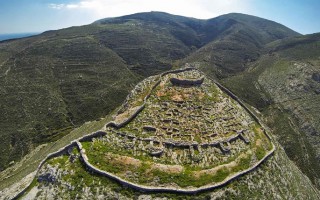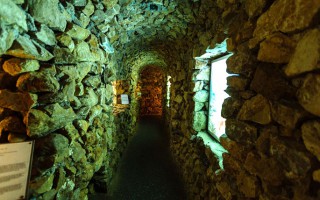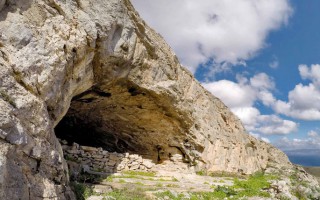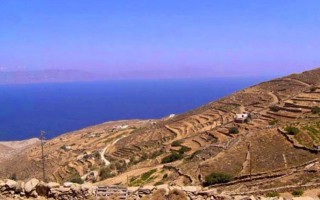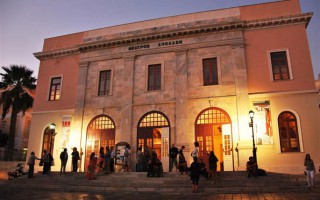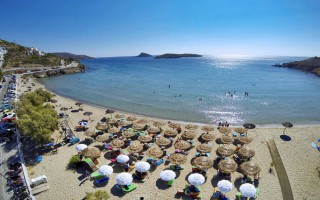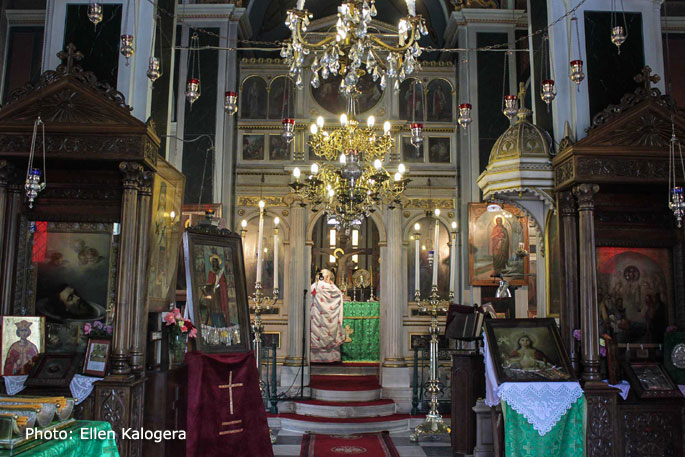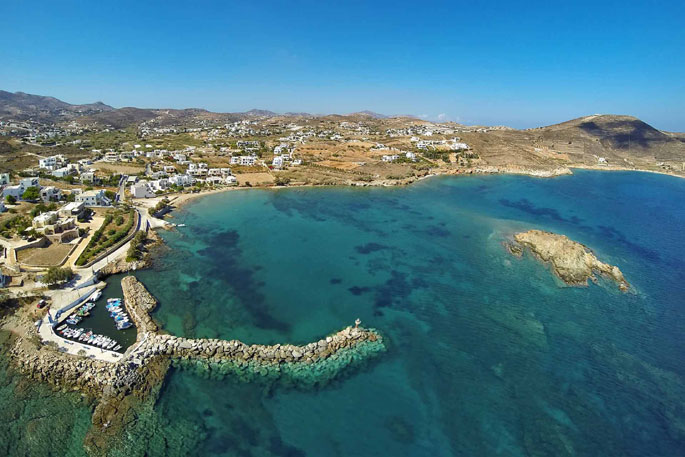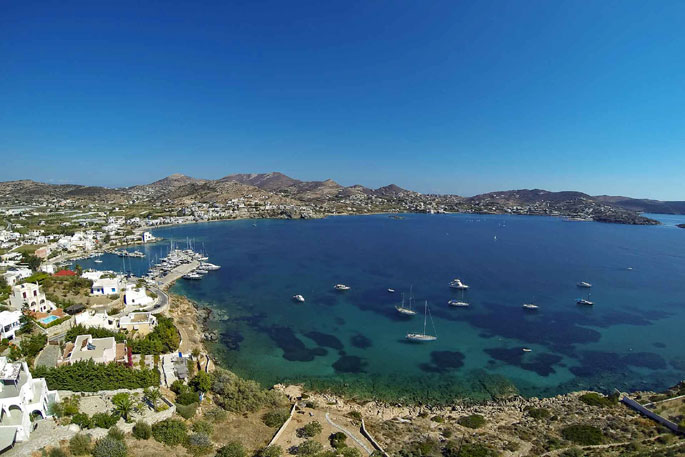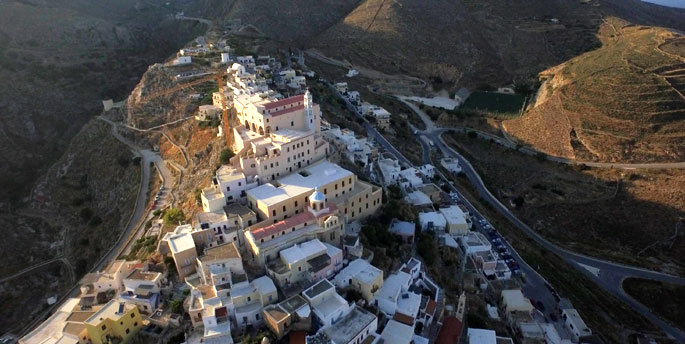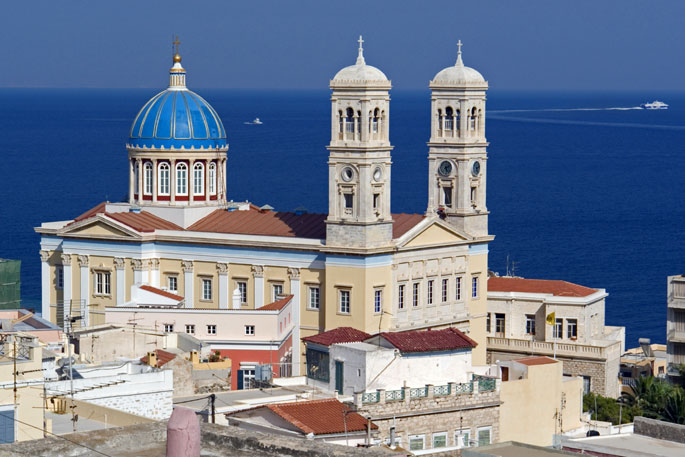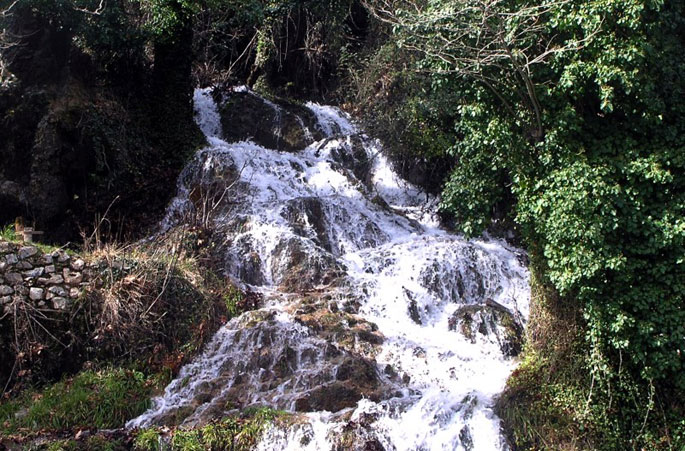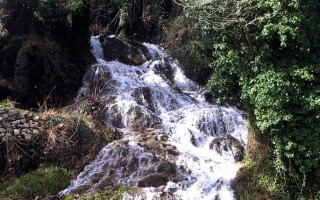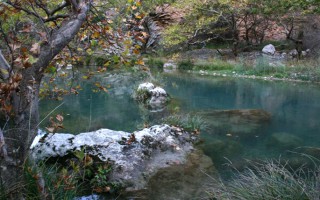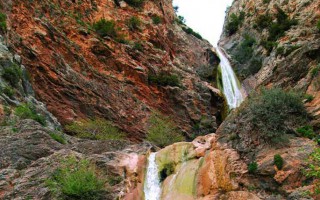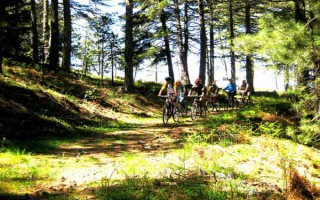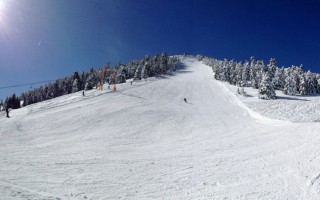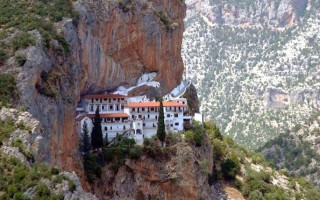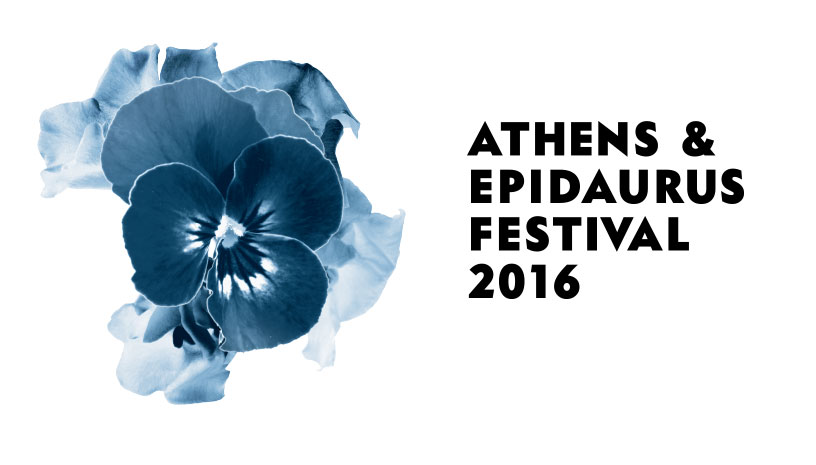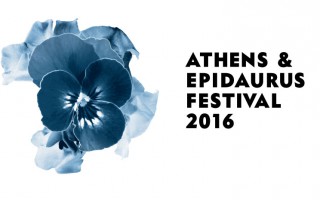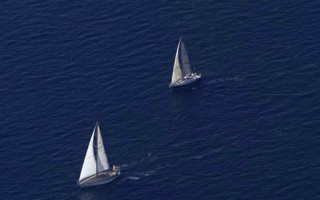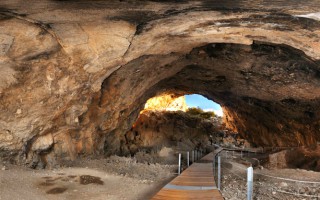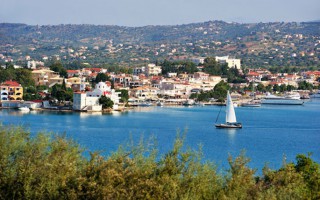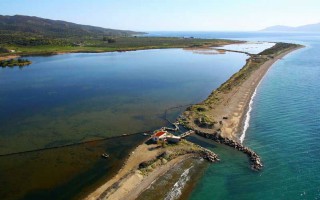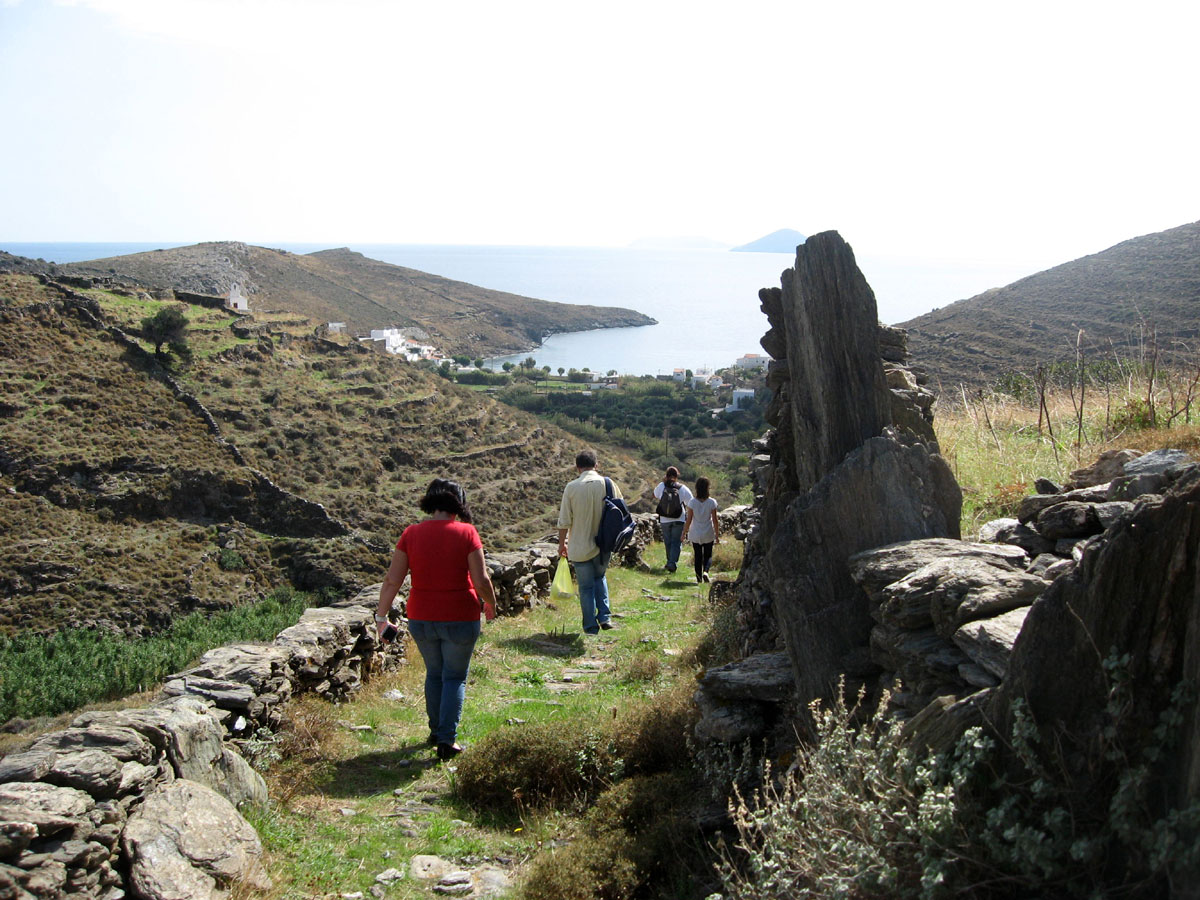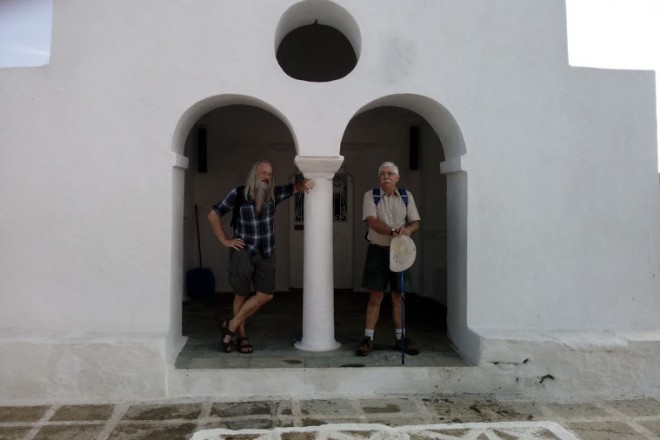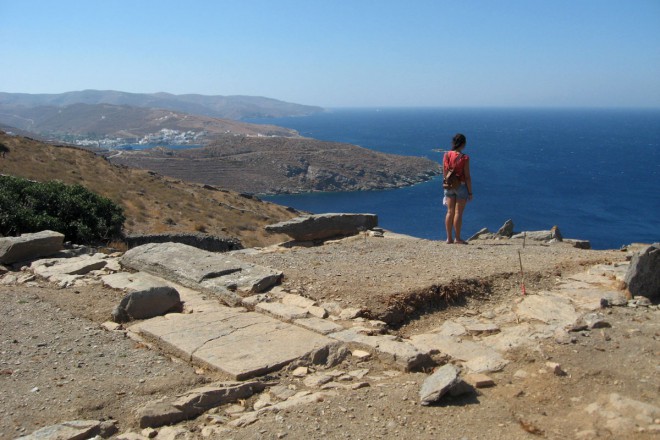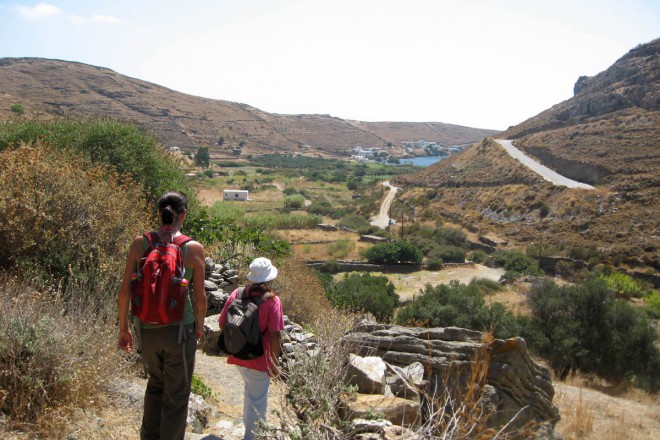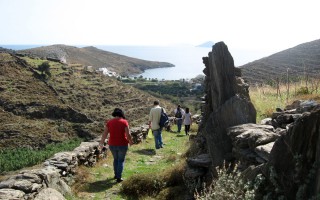On May 25th of 1936 Manousos Pelekis from Ermoupoli had a vision which led him to the icon of Saint Demetrios. After the command of the Metropolitan of Syros at the time, Filaretos a magnificent stone church of Byzantine style with a dome was built in the exact place where the icon was found, a church greeting the ships that arrived. The Temple stands out for the stone walls on the inside as well as the few icons that adorn them. Ships arriving or leaving the port of Ermoupolis whistle just as they pass from St. Demetrios while the priest of the temple, greets them back by ringing the bells.
Source: www.syrosisland.gr
St. John was built in 1876 at the center of Poseidonia with the donations of George Veltsos, Themistocles Petrokokkinos as well as various precious sacred relics and icons of the 19th century sent by Zanis Petrokokkinos from St. Petersburg. It is a church of Byzantine style with a dome and cruciform painted in the colors of the Greek blue sea and the azure sky. In the elder years, on August the 29th visitors used to camp around the temple, light up the beach with lights that were placed on the boats and mansions in honor of the Saint. The celebration continued with live music, dancing and singing and the procession of Saint John with the accompaniment of music, a custom still celebrated to the day.
Source: www.syrosisland.gr
The Golden Beach of Fabrica got its name from the ceramics factory that was formerly located in the area. It is a quiet beach 9km from Ermoupolis on the South side of the island with little umbrellas, ideal for those seeking tranquility and relaxation for their holidays. Guests can swim in the clear blue waters along the beach while the more adventurous can try to swim all the way to Ampelos island.
On the right side of the beach there is a small port where fishermen moor their boats and constitutes an ideal spot for fishing and snorkeling. To reach Fabrica one must follow the way to Vari and either turn left shortly before reaching the settlement or continue until Vari and then follow the signs.
Source: www.syrosisland.gr
Foinikas is a beautiful beach in the west of the Island shortly after Posidonia. It is a favorite destination due to its infrastructure featuring all comforts and conveniences for the bathers such as umbrellas to protect them from the sun, an organized marina for the yachts and traditional fish taverns right by the sea.
The beach of Foinikas is easily accessible and one can reach it by following the road from Ermoupolis to Galissas. It is also a suitable for fishing and snorkeling.
Source: www.syrosisland.gr
An island, a city, a live museum
The central location of the island made Syros one of the most important ports in the Eastern Mediterranean during the 19th century, soon turning it into the commercial, administrative and cultural center of the Cyclades island complex. Hermoupolis still resembles an open-air museum, a live monument of neoclassical architecture with relics and cultural treasures worth discovering. From the medieval city of Ano Syros, the ancient monuments of the Early Cycladic period in Kastri, the municipality of Syros-Hermoupolis, the Apollon Theater resembling Scala di Milano, the Orthodox and Catholic coexistence as well as the various influences from Asia Minor and all the way to the machine center in Neorion operating since 1861, Syros is a unique place of everlasting historical tradition and culture.
Syros- holidays all year round
The island’s privileged location along with its advanced tourist infrastructure and special character make it an ideal destination for authentic and alternative holidays in the Cyclades. Syros is considered a favorable pole of attraction throughout the year as each season dresses the already breathtaking scenery with its own colors and aromas, with its own beauties and contrasts always offering a special and unforgettable experience for all visitors.
Source: www.syrosisland.gr
The Church of St. Nicholas is a magnificent Byzantine Church near Miaouli square that began to be manufactured in 1848 according to the designs of G. Metaxas and the consent of King Otto. The church was finally completed in 1870.
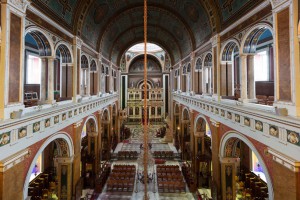 Saint Nicholas, patron saint of Ermoupoli stands out for its lavish interiors and impressive architectural structure, the icon of St. Nicholas that was silver-plated in Moscow, the despotic marble throne, the pulpit and the marble iconostasis that was designed by George Vitali. This is a two-storied monumental temple with marble bell towers, an imposing marble staircase and marble propylaeums, ionic columns, archaic motifs, arcades, sculptured decorations, grey-blue slates and a unique iconostasis definitely worth seeing. The church’s icons were created by some of the best hagiographers of the time while many Greeks from abroad as well as ship-owners helped for the construction of the temple.
Saint Nicholas, patron saint of Ermoupoli stands out for its lavish interiors and impressive architectural structure, the icon of St. Nicholas that was silver-plated in Moscow, the despotic marble throne, the pulpit and the marble iconostasis that was designed by George Vitali. This is a two-storied monumental temple with marble bell towers, an imposing marble staircase and marble propylaeums, ionic columns, archaic motifs, arcades, sculptured decorations, grey-blue slates and a unique iconostasis definitely worth seeing. The church’s icons were created by some of the best hagiographers of the time while many Greeks from abroad as well as ship-owners helped for the construction of the temple.
Source: www.syrosisland.gr
 Parnonas also known as “Malevos” is the mountain range which divides two large counties of Peloponnese, Arcadia and Laconia. The highest peak of Parnonas is called “Megali Tourla” also known as “Kronio” and has 1936 meters altitude. The mountain ends in Laconia at the Cape Maleas, south of Peloponnese.
Parnonas also known as “Malevos” is the mountain range which divides two large counties of Peloponnese, Arcadia and Laconia. The highest peak of Parnonas is called “Megali Tourla” also known as “Kronio” and has 1936 meters altitude. The mountain ends in Laconia at the Cape Maleas, south of Peloponnese.
The natural beauty of the mountain and the traditional villages attract many travelers throughout the year. The best time to visit the area is during the spring season when the snow melts and forms small waterfalls. There are many signposted hiking routes which allow the visitor to admire the gorges, the caves, the waterfalls, the springs and the rivers of this amazing mountain. Climbers will love the challenge of reaching the top of the mountain. “Megali Tourla” (1936m altitude) can be reached through a large path which crosses an amazing gorge. In the beautiful villages of Parnonas you will find places where you can rent mountain bikes or four-wheel drives to explore the amazing locations of this mountain.
Parnonas has five gorges (Loulougas, Mazias, Zarbanitsas, Spilakion, Lepidas) where rare species of flowers blossom. Mazias gorge is the easiest for hiking whereas the Lepidas gorge is very demanding and you will need special equipment and knowledge to cross it.
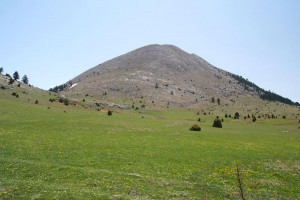 The name Parnonas existed already since the ancient period and the name meant “the ridge which shines”. During the ancient times the mountain was also called “Kronion” because it was considered to be the sacred mountain of Cronus, who was the leader of the Titans.
The name Parnonas existed already since the ancient period and the name meant “the ridge which shines”. During the ancient times the mountain was also called “Kronion” because it was considered to be the sacred mountain of Cronus, who was the leader of the Titans.
There are signs of inhabitation already since the Paleolithic Period which continued throughout the antiquity until the byzantine years. The monastic life is quite strong here and the visitor can still visit some beautiful monasteries, like the known monasteries of Malevi, Loukous and the monastery of Elonas.
Parnonas is also a very important ecological zone in Peloponnese as it is covered with forests of firs, black pine trees, plane trees etc. Around the monastery of Malevi there is the “Juniperus drupacea” (Δενδρόκεδρος) tree forest which is the only one in Europe and has been classified as protected area of the “Natura 2000”. At this mountain there are also many rare species of flora, some of them are known for their healing powers.
The “Wetland of Moustou” is a small lake with two artificial waterways and is located about 2km northeast of Astros. The wetland is also a protected area of the “Natura 2000” as the flora and the fauna here is extremely interesting. During the winter the wetland gathers millions of migratory birds which create a beautiful image. The artificial waterways flow to the shores of the nearby beach where the rare species of “Careta- Careta turtle” can be seen.
Source: www.discover-peloponnese.com/
Athens International Airport with the support of the city guide magazine “Athinorama”,
welcomes you to the “athenspotlighted” programme!
Be on the Spot and discover the unique character, history and cosmopolitan atmosphere of our city through ideal deals! Through “athenspotlighted” programme you are provided with a free discount city card, which can be used at various cultural sites, museums, art galleries, restaurants, night clubs and a wide variety of selected stores all over Athens. Benefits and discounts, as well as the involved spots and all relevant information can be found at programme’s dedicated site www.athenspotlighted.gr
Make sure that you collect your free city card upon your arrival at the Central Information Counter (Arrivals Level). Athens Spotlighted card is a promotional card for the city of Athens intended for the use of its international visitors. The card provides you with special discounts and benefits at our city’s best spots.
Enjoy your stay in Athens!
Website: www.athenspotlighted.gr
διαβάστε περισσότερα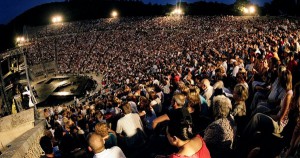 What is the Athens Festival? A great celebration that has lasted 56 summers, and that has hosted some of the leading lights of theatre, music and dance. From Mitropoulos and Callas to Rostropovich, Pavarotti, Leonidas Kavakos and Dimitris Sgouros. From Theodorakis and Hadjidakis to Savvopoulos, Protopsalti, Dalaras and Marinella. From Rondiris and Koun to Streller, Peter Hall, Noh theatre, Bunraku puppet theatre, and the Peking Opera. From Balanchine to Pina Bausch, and from Nureyev and Fonteyn to Martha Graham and Alicia Alonso.
What is the Athens Festival? A great celebration that has lasted 56 summers, and that has hosted some of the leading lights of theatre, music and dance. From Mitropoulos and Callas to Rostropovich, Pavarotti, Leonidas Kavakos and Dimitris Sgouros. From Theodorakis and Hadjidakis to Savvopoulos, Protopsalti, Dalaras and Marinella. From Rondiris and Koun to Streller, Peter Hall, Noh theatre, Bunraku puppet theatre, and the Peking Opera. From Balanchine to Pina Bausch, and from Nureyev and Fonteyn to Martha Graham and Alicia Alonso.
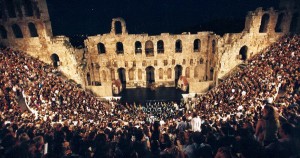 Above all, however, it is a venture with an eventful past often clouded by events in Greece’s recent history. A venture that, over the last two years, has taken on a youthful vitality, and openness. But how did we come to this point?
Above all, however, it is a venture with an eventful past often clouded by events in Greece’s recent history. A venture that, over the last two years, has taken on a youthful vitality, and openness. But how did we come to this point?
Until 2005, Hellenic Festival events were staged at the following venues: the Odeon of Herodes Atticus, the two ancient theatres at Epidaurus (at the Sanctuary of Asklepios, and at the ancient city), and the Lycabettus Theatre. In the summer of 2006, the company began a programme of expansion regarding the venues at which its performances are staged: property granted by the National Bank of Greece allowed for the creation of a new theatre through the renovation of Building D at the former Tsaosoglou Factory at 260 Pireos Street, while other venues around the city were used for the first time, such as Irini Pappas’ “Scholeion”, the Kotopouli Theatre, the Benaki Museum, the Faliro Indoor Sports Hall, the Porta Theatre, and others. A new theatre, co-funded by the Ministry of Culture and the Hellenic Festival, was created in 2007 through the renovation of Building H at the Peiraios 260 complex.
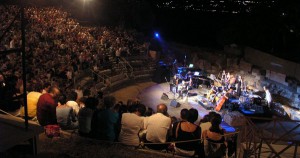 In addition to the creation of new venues for the staging of its performances, the company aims to broaden the audiences that attend its events, to highlight and promote the work of young artists, and to present contemporary trends in dance, music and theatre through the invitation of, and collaboration with interesting artists and performance companies. Efforts are being made to fall in line with the major European festivals of this kind.
In addition to the creation of new venues for the staging of its performances, the company aims to broaden the audiences that attend its events, to highlight and promote the work of young artists, and to present contemporary trends in dance, music and theatre through the invitation of, and collaboration with interesting artists and performance companies. Efforts are being made to fall in line with the major European festivals of this kind.
Programme: click here
Tickets: click here
Venues
Website: greekfestival.gr
 Despite being near to Athens – two hours from the port of Lavrio, three from Piraeus – Kythnos remains unknown and undeveloped for mass tourism, unlike others in the Cycladic group of islands in the Aegean. It retains its traditional character of whitewashed villages with narrow streets, wild countryside with spring and summer flowers. Many of our walking trails pass churches and arrive at one of the numerous sandy beaches on the island.
Despite being near to Athens – two hours from the port of Lavrio, three from Piraeus – Kythnos remains unknown and undeveloped for mass tourism, unlike others in the Cycladic group of islands in the Aegean. It retains its traditional character of whitewashed villages with narrow streets, wild countryside with spring and summer flowers. Many of our walking trails pass churches and arrive at one of the numerous sandy beaches on the island.
The island’s history is one of the oldest in the Cyclades going back 9000 years. It was an economic and political centre in ancient times. Since then, the Byzantines, Venetians, Ottomans and Germans have all had an influence on the island. The hikes show these historical roots.
Our team of hiking guides is led by Katerina Filippa, one of the co-authors of the Kythnos Hiking Guide (published by Terrain Editions). She was born and brought up on the island and knows its history. She holds a First Aid certificate like our other guides.
Some of the trails go along rough mule tracks and are not suitable for very young children. However, Kythnos does not go much above 300 metres in height and the walks are not too demanding.
We hope you find interesting the walks and the cultural events. Also that you share and respect the island together with its friendly full-time inhabitants.
For further information please email info@hotelgalatas.com or telephone 0030 693 7788764.


